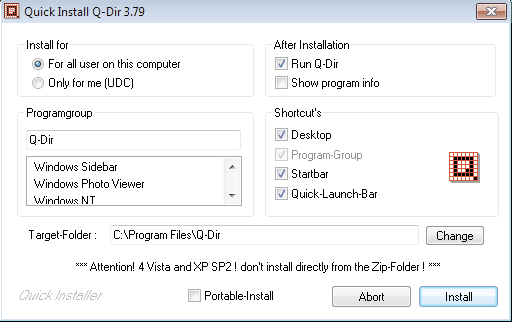
- #Issue using running q dir how to
- #Issue using running q dir install
- #Issue using running q dir code
- #Issue using running q dir series
The application is the default application you get when you create a new ASP.NET MVC 3 application and select the "Internet application" template. We'll be using an ASP.NET MVC 3 application as the sample application. Whenever our first job completes successfully, it will copy the relevant build artifacts and launch a web server with our new code. We'll also setup a second Jenkins build job to monitor the first job.
#Issue using running q dir code
Then we're going to setup a Jenkins build job to pull any new code changes from our repository and run our MSBuild script. In this article, we'll be writing our very own MSBuild script from scratch so with a single command we'll be able to delete the previous build artifacts, build our. Your *.csproj and *.vbproj files are MSBuild scripts. All MSBuild requires is a build script and a target within the build script to execute. Visual Studio uses MSBuild to build your. NET based projects, you're going to need to be familiar with one more tool to make use of Jenkins MSBuild. Jenkins can handle your Continuous Integration needs for your PHP, Ruby on Rails, or. However, it isn't just useful for Java-based projects. You could even take it further and use Jenkins to deploy your application automatically or with a single click.ĭeveloped by an ex-Sun employee, Jenkins clearly shows its Java-based roots. You could configure Jenkins to look for all the things mentioned in the scenario above.
#Issue using running q dir series
Jenkins allows you to create build jobs via a web interface which consists of a series of build steps. One of the most popular is a Java-based tool called Jenkins. There are a variety of tools available for Continuous Integration. The best way to do this is to have the build verified whenever any new code is pushed into the repository, which is what Continuous Integration can do for you. But if they do happen you want to learn about them as soon as possible. One unreliable way to avoid these possible issues is to hope all members of the team are diligent enough to make sure these kinds of mistakes don't happen. But wait what if the new code broke the build? What if it causes a compilation error? Or broke some tests in the test suite? Or what if the code didn't achieve the minimum value expected for some code quality metric? Follow step 4 again and your SonarQube will be up and running.You or one of your colleagues just finished writing some code and pushed the changes to the team's repository. Close the terminal and open a new terminal.
#Issue using running q dir install
If you face any issue like this, then just click on more info and download the required Java SDK & install on your machine. sonar.sh -help // to see other commands Run this command to start the SonarQube Server. Here, you will find “sonar.sh” Bash file. Open “terminal.app” (for other OS Platform “Command prompt”), and from terminal itself, go to same folder path where we kept the 1st unzipped folder, i.e., sonarqube folder > bin > respective OS folder.Ĭd Users/apple/sonarqube-7.4/bin/macosx-universal-64 Open it in edit mode.Īdd these two basic properties in “sonar-scanner.properties” file, or if it’s already there but commented, then uncomment it. Inside your “sonarqube-scanner” folder, go to “conf” folder and find “sonar-scanner.properties” file.
#Issue using running q dir how to
Please check on other resources how to set. Add “Environmental Variable” (for macOS, it goes under “.bash_profile” file for other OS platform, it varies.Unzip both the downloaded files and keep it at a common place (I kept it here inside users root level).Download “SonarQube-Scanner” (download as per your machine OS).Download “SonarQube” (download as per your machine OS).

Install JVM on your machine (I installed it by Homebrew).For that, this you need to check on other resources.

The steps for SonarQube setup used in this article are performed under MacOS platform but the same steps can be followed while working on other OS platforms also except “Step 2” (setting environmental variables). It provides us with a beautiful dashboard with the functionality of in-detail scanning data where we can analyze our code quality and improve it. Well, as I told in the description, SonarQube is an open-source automatic code review tool to detect bugs, vulnerabilities, and code smells in your code. First of all, let us understand what SonarQube is and why it is so important.


 0 kommentar(er)
0 kommentar(er)
